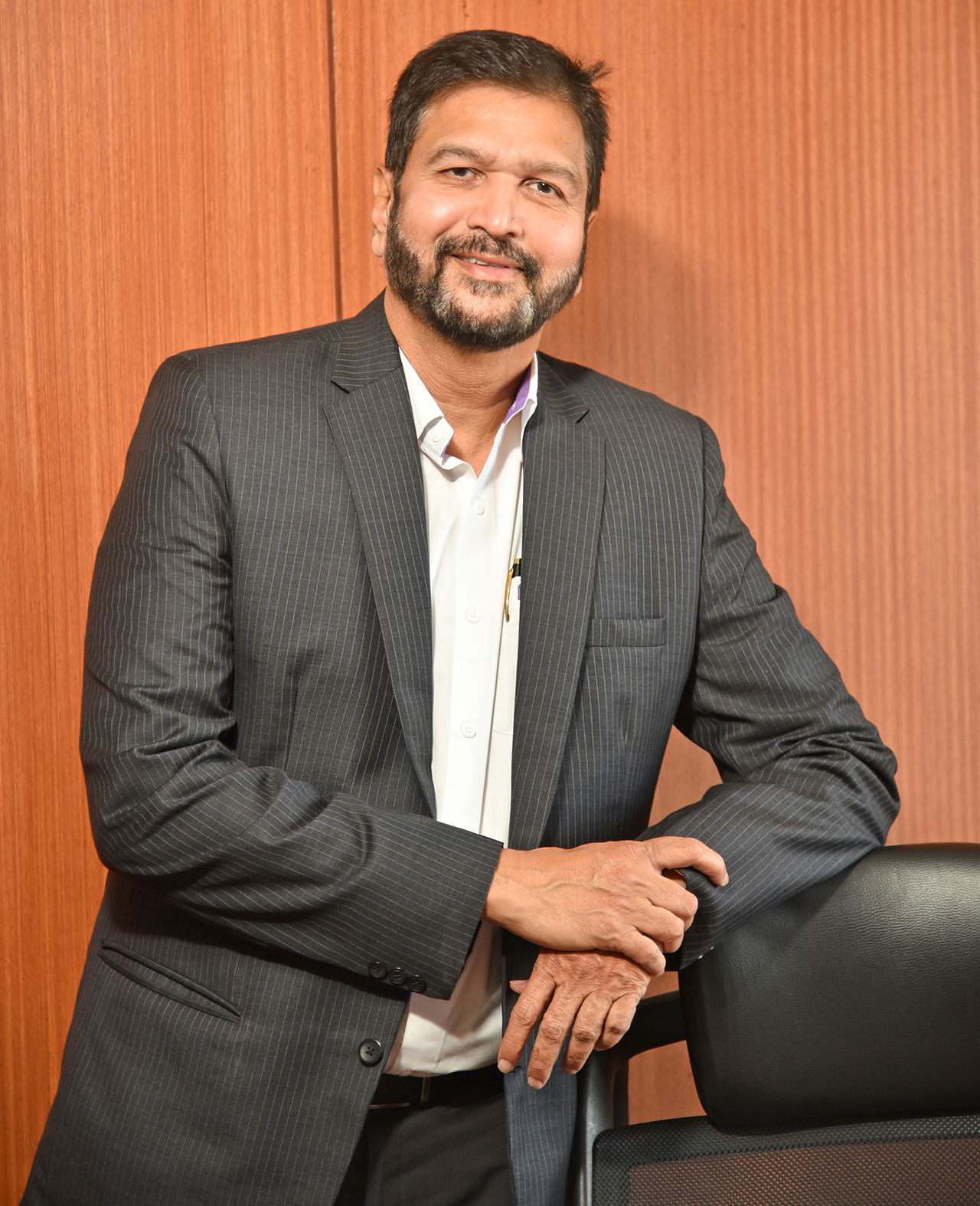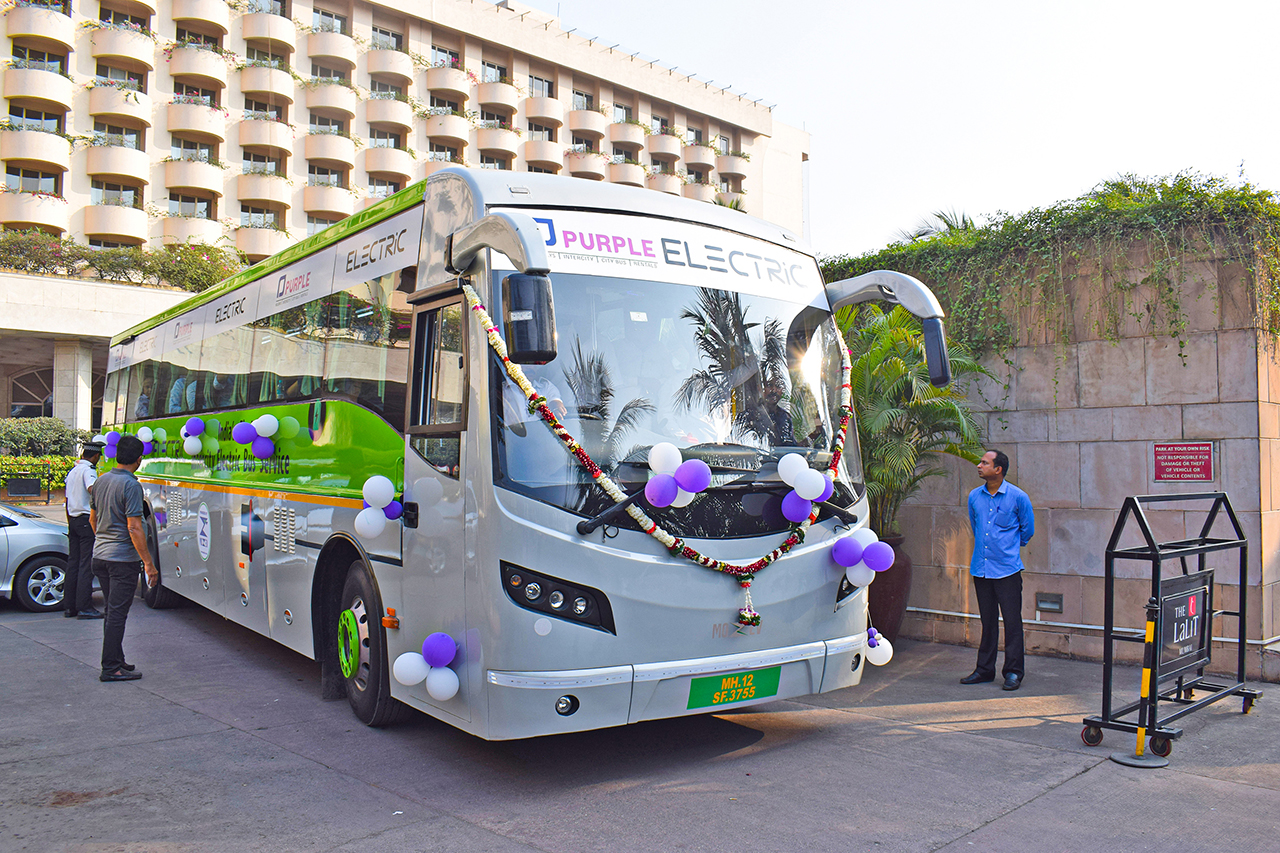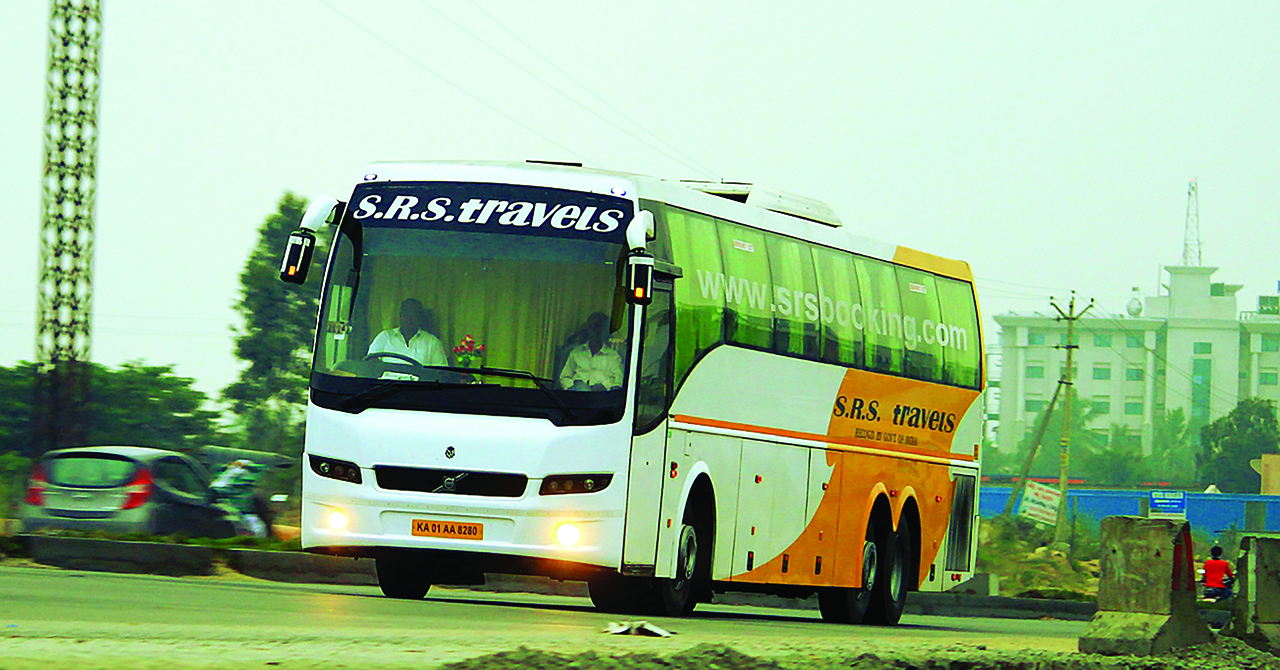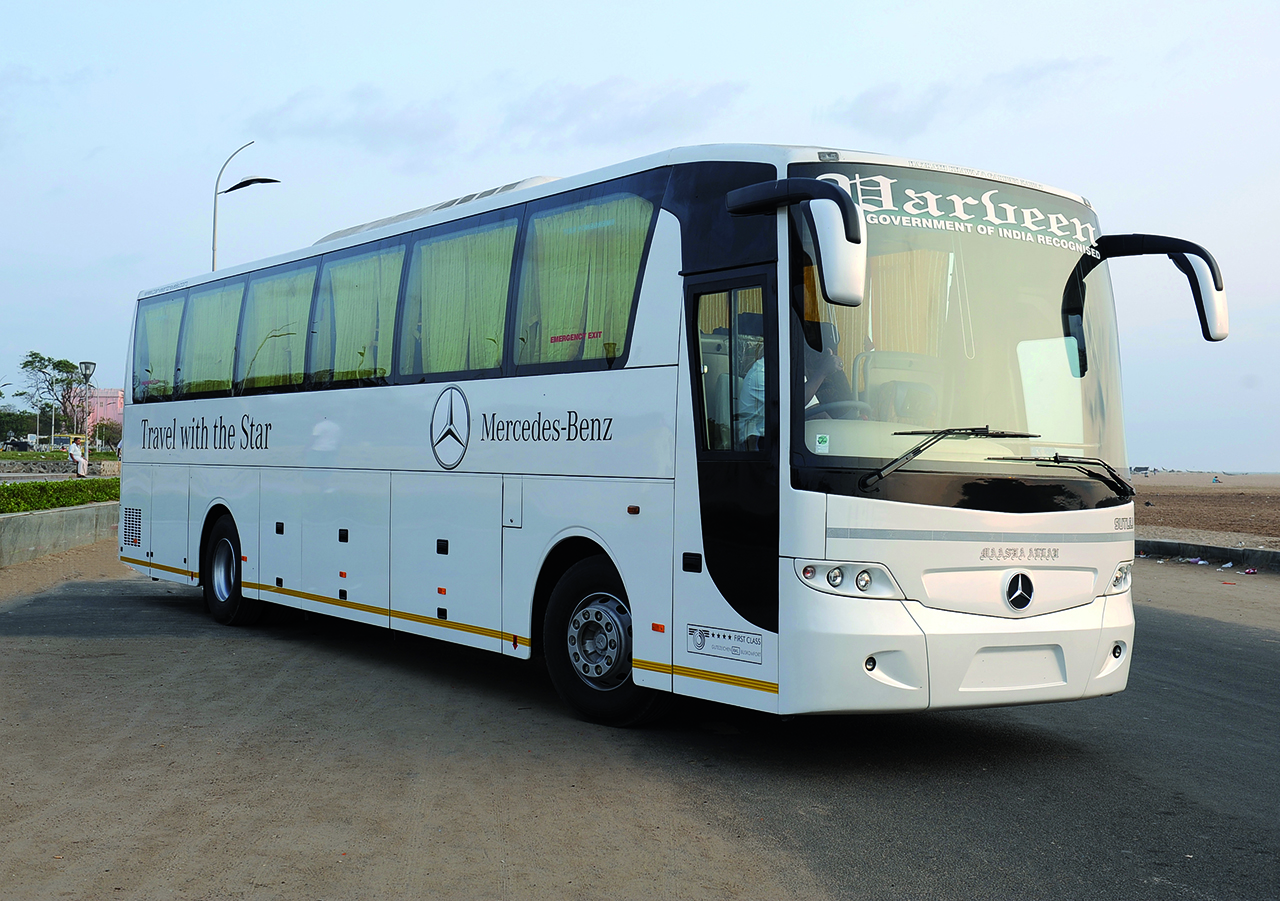This is an opportune time to make changes to strengthen public transport. Central, state and local governments should proactively act to ensure that big changes are introduced in the passenger transport system. Public transport has to be made cheaper and usage of personal vehicles should be made expensive by levying more taxes and parking fees, suggests Prasanna Patwardhan, President, Bus & Car Operators Confederation of India (BOCI)

In the overall scenario, economy would get a big hit during this financial year. MICE, hospitality and tourism industries are amongst the most badly hit sectors, of which the passenger transport sector is not exceptional. This suffering is not only limited to the lockdown period but it would take a long way to sail through the post lockdown phase too. Even after relaxing certain restrictions, operating city and intercity buses would still be difficult due to the social distancing norms and passengers’ apprehension about travelling in buses.
Some of the challenges faced by bus and car operators are:
• Vehicles are not being utilised due to frequent and uncertain lockdowns.
• Revenues are almost zero for many months for operators of school buses, tourist cars and vehicles operating in the IT sector.
• There is uncertainty about how to pay fixed expenses such as employees’ salaries, parking fees, rents, bank loans and security services to secure vehicles.
• Loans given under various RBI schemes are being utilised only to repay banks and are of no use to sustain businesses.
• Once things come back to normal it would be a challenge to arrange funds to make vehicles roadworthy.
• Retention of good employees is a big issue, including getting back the drivers and mechanics.
• The useful life of vehicle on permit has been wasted for almost two years.
Burdens Aplenty
Rather than giving financial support to the public transport sector, the government has burdened it with heavy taxation. Unlike many developed countries, public road transport in India lacks appropriate attention from the government and other stakeholders to sustain its financial status. Inadequacy in supply and efficiency of public transport has compelled commuters to shift to personalised mode of transport. In addition to this, personal vehicles are levied with low tax as compared to public service vehicles. Buses are taxed at least 10 times more than personal vehicles. The highest MV tax charged for cars is 7% to 12% of its buying price for a lifetime whereas buses are taxed every month.
Taxes on stage carriage buses are levied on percentage to revenue whereas for contract carriage buses they are based on seating capacity per year. Indeed, private intercity buses pay taxes greater than the bus cost over their useful permit time. State transport undertakings (STUs) are also impacted by the pandemic, facing a major financial crisis. STUs constitute only 8% of the total bus fleet in India and the rest (92%) can be attributed to the private sector. The present crisis faced by STUs and private operators is not uncommon. State governments do support STUs financially but that is also inadequate plus in an unplanned way, ultimately not being useful for STUs to provide better services.
Woes of Private Operators
Private operators are in the worst situation. They are neither entitled for any financial relief from the government nor provided any infrastructural support. In addition, they are being treated with a bias by enforcement authorities, thereby causing stunted growth. The fare structure does not match the input cost for stage carriage services. Fares have not been increased for years as they are fully controlled by the government and are not revised as and when required to cover the ever-rising input cost. All this is adding up to the difficulties of the service providers and which is why public transport services in India are poorly managed. Before the pandemic, the stage carriage operators were somehow managing only because of overloaded passengers; even then they were unable to cope up with the cost of operation. Now with social distancing norms and passengers’ apprehensions about going in a crowded bus, the situation has become grave.

Searching for Solutions
So how would it be possible to cover additional costs at lower income? Most of the state governments were unable to support STUs even in the past and now with lower income and extra expenditure on sanitization and ever-rising fuel prices, one cannot expect local or state governments to triple their financial support to STUs when operations resume post the lockdown. The situation of any mass transit like BRTs, metros or urban rails would be no different. Operators working under the public private partnership model with STUs are in the worst situation as they have not being paid their dues for several months. Above that, STUs neither allow the operator to run the buses nor compensate minimum kilometres cost under the clause of force majeure.
The question is that if the passenger transport system collapses how will millions of people travel? Many private operators could not sustain losses incurred during this pandemic and had to close down their operations while some will have to face a storm to restart. Buses used for schools, tourism and company employees have remained unmoved for the last 16 months. Under such circumstances, if such services collapse, millions of people dependent on these services will face serious mobility crisis and this needs immediate attention. The private sector owns 92% of the buses but is still completely ignored by central as well as state governments. Unless the government comes up with special schemes for private operators and banks, it would not be able to overcome the damage caused to them.
Is the government serious on preserving the environment? I believe that if the government is serious on preserving the environment it must have a favourable taxation policy, develop better public transport infrastructure, introduce a fare revision mechanism focused towards strengthening public transport and provide enough financial support accordingly. This will give relief from the chaotic traffic situation and will make cities less polluting and give people affordable, comfortable, and reliable and sustained public transport network. For this the government will have to work out a plan at least for the next five to ten years to ensure that the passenger transport industry not only comes back to normal but grows going forward.

Some of the solutions could be:
Financial Support
• To provide moratorium of one year for repayment of loan at 4% interest and 0% for lockdown period.
• Special schemes to sustain businesses. Various RBI schemes are mostly beneficial to banks. Burdening businesses with more debt is not going to solve long-term issues; for businesses it is just postponement of their problems but because of which the banking sector is showing growth in their profits. Banks, instead of supporting businesses, have earned huge amounts by debiting amounts against check bouncing, delayed payments and penal interest whereas all these delays by operators in repaying loans is mostly due to late receipt of instructions or guidelines from the RBI to disburse amounts under the ECLGS scheme or moratorium declared by the Ministry of Finance.
• Make taxation favourable to public transport. Personal vehicles are taxed much less compared to taxes levied on buses. Personal vehicles are charged one-time tax whereas buses are taxed every month, thus making it too expensive. Personal vehicles should be charged with more taxes than taxis and buses. During the pandemic years taxis and buses should be made tax-free. And going forward, like personal vehicles taxis and buses also should be charged with lifetime tax at the time of registration.
• Retain employment. Pay employees’ salary through ESIC or PF funds for the period of lockdown while for the next two years the government should pay ESI and PF contribution of both employer and employee. There should not be a levy of statutory dues on the amounts paid by businesses to their employees as pandemic allowance to retain their employment in spite of closure of services.
• Fuel should be provided at concessional rate. For public service buses fuel should be provided at concessional or basic rate without adding tax burden to make services economical.
• Allow public and private companies to buy more buses without levying GST for the next one year. In addition, give rebate in GST payments for the next two years similar to tax rebate schemes provided to new industry setups or SEZs.
• To provide viability gap funding to private bus operators like STUs for similar services.
• To ensure timely payment to public private partnership operators.

Non-Financial Support
• Broaden the definition of public transport by making it more comprehensive and inclusive. Define public transport services by usage rather than clubbing them into stage and contract carriage buckets and make them more user-friendly.
• Make the luxury segment competitive and vibrant. Completely open up the luxury segment of bus services to the private sector with flexible permit conditions like airlines. Let private operators compete freely with STUs.
• Extend useful life of a bus on all types of permits for at least two years.
• The scrapping policy should be based on the quality of a vehicle, usage in kilometres and mechanical condition rather than fixed equal number of years for low and high-quality vehicles, lesser or higher kilometre usage and good and bad mechanical condition.
• Rationalise ticket rates of stage carriage operators and increase fares in proportion to input costs.
• Encourage going to workplaces and schools by buses.
• Discourage the usage of personal vehicles. Make parking of personal vehicles expensive and levy congestion tax on cars and two-wheelers for entry into crowded city areas.
• To have nationwide agency controlling and managing public private partnership projects for public transport.
• Make regulations supporting the National Urban Transport Policy.
Infrastructural Support
• Develop bus and multimodal terminals, parking lots, highway stoppage areas and access to private bus operators across India, similar to airports.
• All STU bus stations to be modernised and private operators should be allowed to operate on similar lines like airports.
• Use vacant government lands to provide free parking of buses.
• Provide parking places or zones for tourist buses at places of tourist attractions to encourage usage of buses by tourists.
• Encourage usage of buses at tourist locations by banning personal vehicles in certain areas of tourist attractions.
This is the opportune time to make the required changes to strengthen public transport. Central, state and local governments should proactively act to ensure that big changes are brought into the passenger transport system. Public transport has to be encouraged while discouraging usage of personal vehicles.